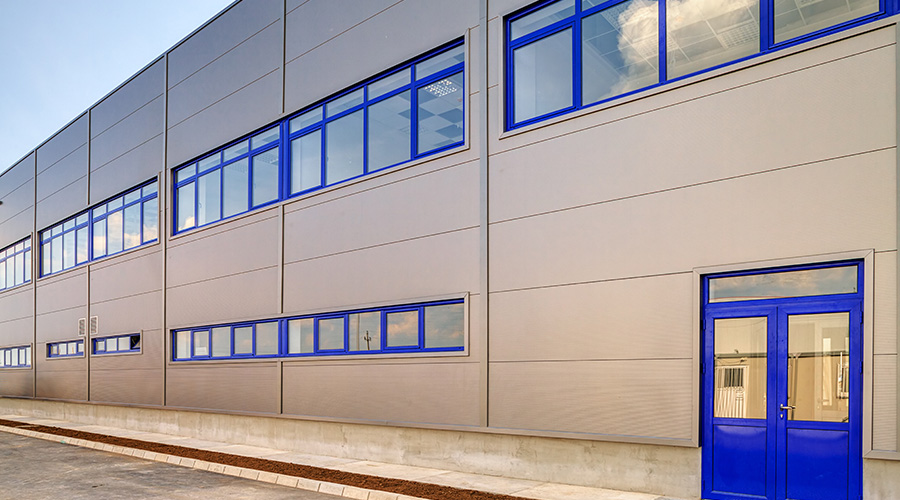‘Green’ Paints Come of Age
Manufacturers respond to facilities’ ongoing demands for products to address IAQ and mold concerns
The primary purpose of paints and coatings — to enhance appearance — has remained consistent for decades. In the mean time, newer issues in institutional and commercial facilities continue to influence formulation advances and trends in the industry. Perhaps most importantly, users’ call for products that contribute to healthy indoor environments, which has prompted manufacturers to reformulate product offerings.
“The ‘green’ movement is hot in architecture and is becoming hotter in facilities management,” says Steven Sternberger, marketing supervisor for PPG High Performance Coatings, who has seen an increase in questions from managers seeking paints that pose few if any environmental or health risks.
Because of growing public concern surrounding indoor air quality (IAQ) issues, the demand has never been greater for products that contain fewer volatile organic compounds (VOC) and that help prevent the growth of mold and mildew.
Mold Matters
Adverse health risks related to exposure to indoor mold have gained public attention in the past decade and might be today’s most highest-profile IAQ issue.
“Concerns about mold and mildew continue to be prominent due to increased media coverage,” says Angela Cunningham, brand manager for Zinsser Co. “Million-dollar lawsuits and concerns over exposure to mold and mildew have prompted many facilities — including hotels, restaurants, schools, managed-living facilities and health-care facilities — to initiate maintenance and IAQ remediation projects that focus on the prevention of mold and mildew growth.”
Jeff Spillane, marketing manager for Benjamin-Moore & Co., says health care facilities are the current drivers of the ‘green’ movement. These facilities need to be familiar with IAQ matters, most importantly to avoid health risks to patients.
“Of critical importance to health care facilities are paint features like low odor, which allows crews to paint in or near occupied spaces without disruption to occupants,” say Bill Rafie, director of marketing for Sherwin-Williams Co. commercial segments. “Health care facility managers are seeking coatings that contain zero VOCs. Paints that offer anti-microbial properties are also of interest to health-care facility managers because cleanliness is a very real issue.”
He says, hospitals have even inquired about paints that do not contain silica. While paints with silica can be more durable, IAQ concerns can arise when workers sand walls with silica-containing paints, releasing silica particles into the air and causing potential health problems.
Beyond Health Care
Managers in health care facilities certainly are not the only ones with a keen interest the role of paints and coatings in IAQ.
“Educational facilities are also becoming more aware of the ‘green’ trend and, as a result, are using more water-based products,” Spillane says.
The growing preference for water-based products has dramatically affected product development at Benjamin-Moore, he says, adding that demand for latex paints has driven its production from 50 percent to 80 percent in recent years. Facilities’ demand for IAQ-friendly products also has helped give rise to VOC regulations with which paint manufacturers must comply.
“The biggest challenge is creating new products that meet the new VOC regulations,” Spillane says. “The VOC laws are driving new products.”
The critical challenge that manufacturers face is lowering the VOC in coatings while also improving application and performance properties. Many manufacturers claim to have improved their water-based paints, or to have developed new formulas, to such an extent that these products now rival or outperform their oil-based counterparts.
Budget Blues
Despite an economy that seems to be improving, maintenance departments and paint shops still must deal with shrinking dollars and resources due to budget cuts.
“Like virtually every other department manager in an organization today, facility and building maintenance managers are facing tighter budgets and reduced staff, so they’re looking for maintenance products that can get the job done well, but keep costs in line,” Rafie says. To make dollars go further, managers seek more durable products that can reduce long-term maintenance costs.
“As maintenance and facility budgets are tightened, managers of these departments are being charged with getting increased performance, longer life and better economy out of every product used,” he says, and paint is no exception. “In response, paint and coating manufacturers are continually developing products that are more durable and more easily cleaned, so the repaint cycle is extended and associated labor costs are lowered, as well as products that address specific concerns, such as environmental and aesthetic issues.”
Budget cuts and changes in organizations are not the only issues that have an impact on paint specification, Sternberger says. Facility budgets now focus more on security issues and less on paints and coatings.
“This has challenged maintenance managers to seek solutions to lower costs without sacrificing service or quality,” he says. Increasingly, managers call on contractors to work on large or time-sensitive projects.
“A couple of decades ago large facilities had on-staff painters to complete painting projects,” Spillane says. “More of the larger jobs are now contracted out-of-house.”
Changing Facility Use
While painting crews in some facilities, such as hospitals, regularly have to work around occupied areas, manufacturers say they see other types of facilities that have less time to complete maintenance operations because of increased use of facilities.
“More facilities are occupied for longer time periods and there is very little time to do maintenance work,” Spillane says. As a result, managers are turning to paint manufacturers for solutions that allow crews to work around occupants and minimize paint-related downtime.
“They want to know how long they will have to wait before they can use the painted area,” Spillane says. Managers interested in reducing paint-related downtime often ask manufacturers questions related to durability, drying time and application techniques.
Says Rafie, “We’re most often asked about performance features of our various paints and coatings and how those features translate into labor- and time-saving advantages for maintenance and facility management teams.”
The Lowdown on Low-E paints
Low-emissivity (low-e) and other energy-saving paints are an emerging trend in the paints and coatings industry. Besides helping to prevent heat from passing through a wall via conduction, low-e paints also reflect heat back into a room. As a result, rooms with low-e paint tend to feel cooler in the summer and warmer in the winter.
Mark Aument, technical service representative for Radiance, a manufacturer of interior latex low-e paint, says the paints use aluminum particles that reflect radiant energy in a room. During the winter, he says, about 95 percent of a room’s radiant energy escapes through the walls and ceiling via conduction.
“In a room painted with low-e paint, as much as 25 percent of the radiant energy is reflected back into the room,” he says. In the summer, the sun is a primary source of radiant energy, and low-e paints form a barrier that blocks exterior radiant energy, he says.
While energy-saving paints are a relatively new arrival, more manufacturers are introducing their own formulas. Sherwin-Williams Co., for example, will unveil a low-e paint in February 2004.
Here are issues to consider when it comes to low-e paints:
- Manufacturers claim buildings with low-e paint can have energy bills 5-15 percent less than those with traditional paints. The savings comes from setting back the thermostat. Manufacturers say that occupants can lower the temperature 2 degrees or more in a room with low-e paint and still feel as comfortable.
- The cost of low-e paint is comparable to major-brand premium paints, and the paint usually comes with warranties for durability and washability.
- Colors are limited. Because of the aluminum particles, the paint is not available in bright white. The large amounts of tinting is needed to give paint a dark color would reduce the paint’s ability to form an effective emissivity barrier.
- Applying a traditional paint or wallpaper over the low-e paint will lower the energy-saving benefits.
|
Related Topics:











